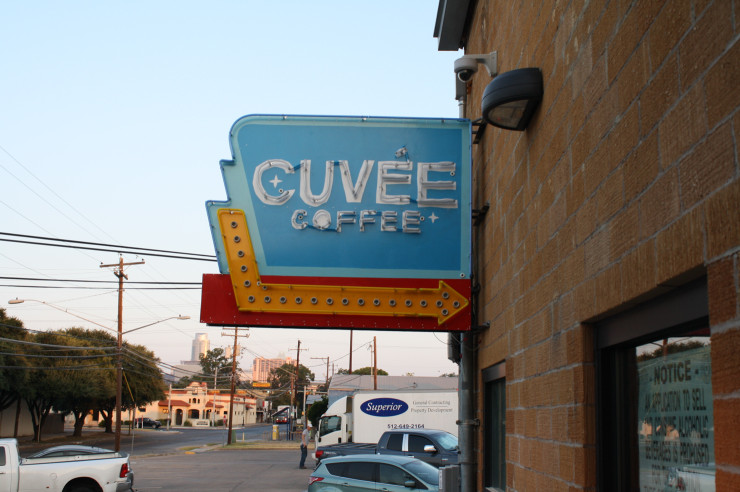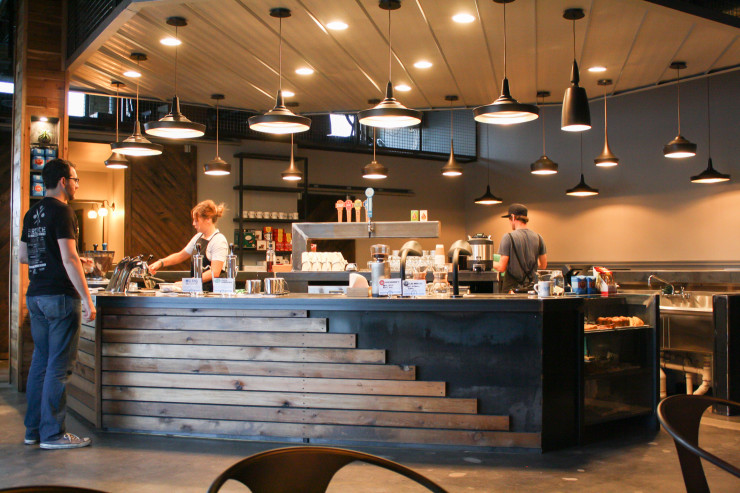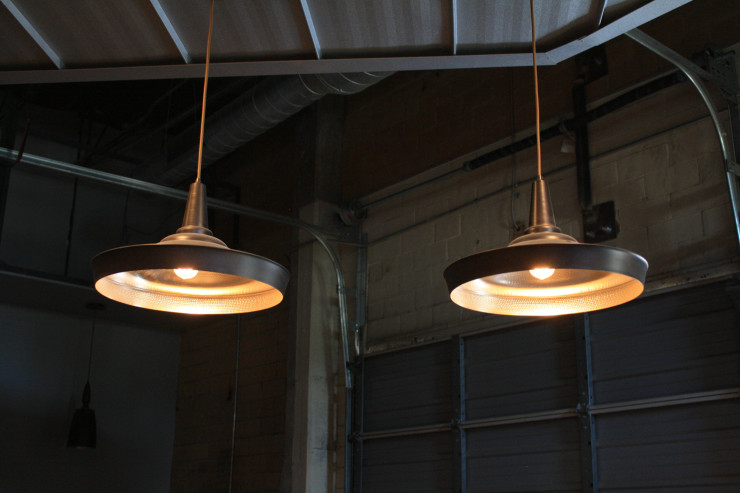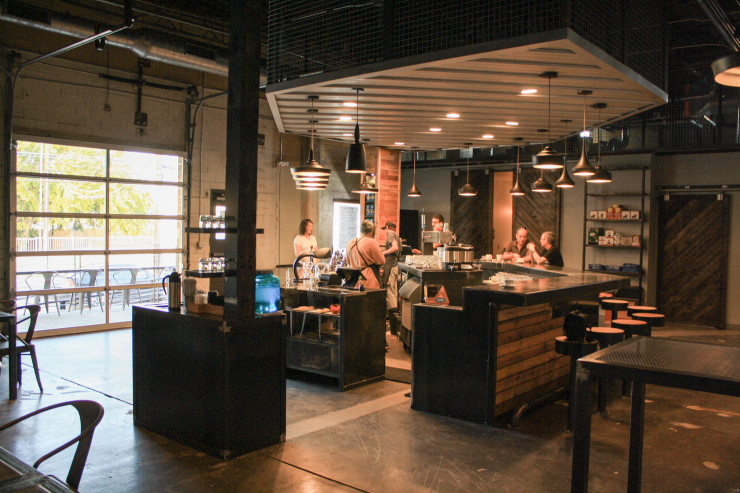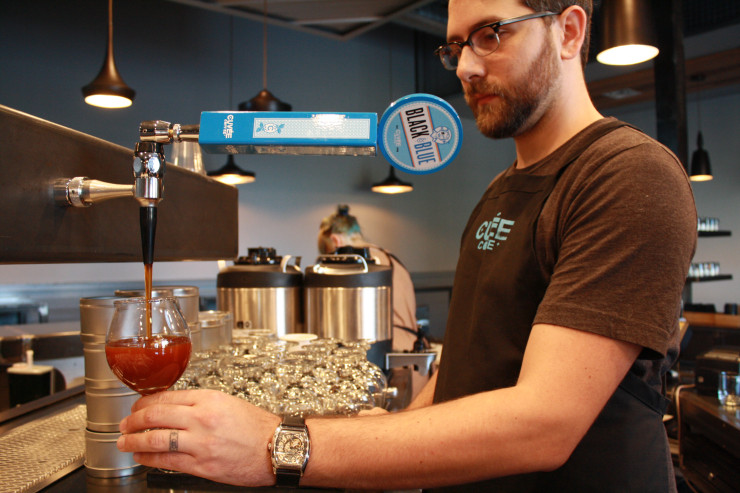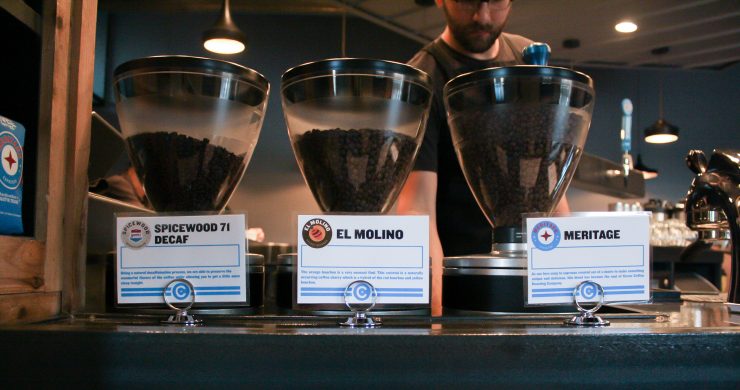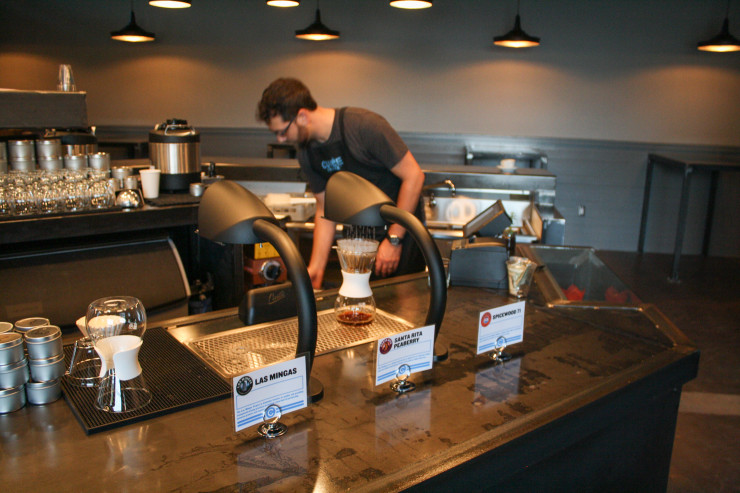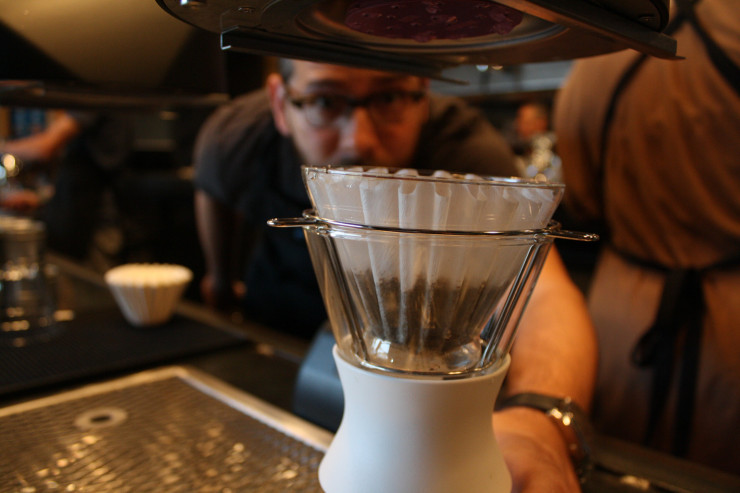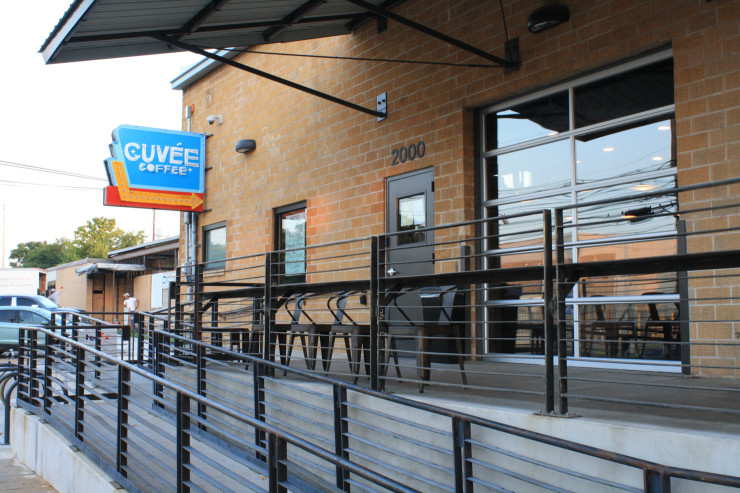Cuvee Coffee is a recognizable force in Austin coffee and by extension, Texas coffee. Founded back in 1998, they are today one of the oldest and most established specialty coffee roasters in Texas. The brand’s signature light blue packaging has appeared on top cafe shelfs across the city, and Caffe Medici, Houndstooth, and Once Over have all, at one time or another, served Cuvee as their primary roaster. Yet, despite its cultural prevalence here in Texas and storied history dating back to the late 90s, Cuvee has never opened its own permanent café. That changed on Wednesday, August 27th, when Cuvee Coffee Roasters officially opened its first retail concept.
Located at 2000 E. 6th Street in Austin, Cuvee’s first full-fledged retail space comes hot on the heels of another East Austin shop opening, Figure 8, but with an entirely different concept and atmosphere. Cuvee owner Mike McKim decided to highlight the industrial bones of the warehouse space that Cuvee now inhabits. Concrete floors below and exposed metal pipes above, running along the tall ceiling overheard, set the space’s general feel. McKim and company built upon this vibe with black metal mesh tables pocking the light grey of the north and east walls, completing a monochromatic canvas.
In vivid opposition to this greyscale backdrop is Cuvee’s massive island bar erected at the center of the shop—a striking conglomeration of wood and steel that is a sight to behold. Custom built by Black Cloud Welding, the black steel countertop circumscribes the barista workspace in a flattened hexagon shape. Stained wood panels partially conceal the base of the steel structure, helping break up monochromatism with warm, natural tones. In the middle of the workspace stands more metal: an asymmetrical steel arm jutting out of a countertop with taps sticking out of both sides, 12 in total. The arm bisects the building and helps define the primary use for each side. The front half with its single tap dedicated to Black & Blue, Cuvee’s nitrogenated cold brew, is for ordering coffee, while the back half with its nine beer and two wine taps is for drinking and hanging out.
But the real intrigue is how the design of the bar will shape the customer experience, particularly as it relates to ordering coffee. The three sides of the hexagon allotted for the coffee bar create a long arc, giving Cuvee baristas quite a bit of customer-facing counter space at their disposal. Instead of opting for a more traditional approach to ordering, where customers order at the counter, pay, then wait for their name to be called once their drink is ready, McKim is looking to take full advantage of this additional workspace by offering an assembly line-style method.
Now, customers order individual components of their drink at different stations along the line. “We wanted to see if we could change the flow in a coffee shop and create a good experience for customers,” McKim told me. “This model gives the customer more opportunity to interact with each station, if they choose to. We believe it creates an engaged and excellent experience for people.”
Cuvee has fully embraced this assembly line approach, in the process doing away with most drink naming conventions. “Cappuccino” and “macchiato” are not the preferred nomenclature, dude. Instead, customers select their espresso one of the three Mahlkönig K30 Air grinders stationed at the beginning of the line and indicate if they want a two-, four-, eight-, or twelve-ounce beverage. At the time of my visit, customers could choose between Cuvee’s Meritage espresso blend, El Molino from El Salvador, and the decaf Spicewood 71 from Colombia. McKim believes this stripped-down approach will lead to a positive, more transparent experience for customers: “One of the benefits of this model is less confusion for the majority of customers. It strips away the often conflicting industry nomenclature about drink names and sizes that creates confusion for so many.”
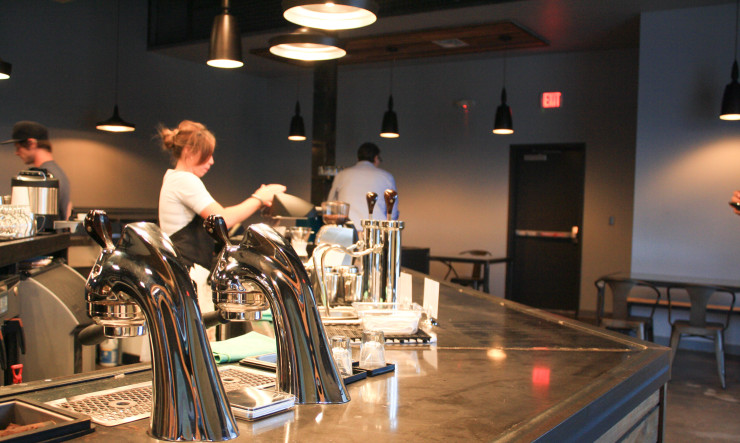
In order for the assembly line method to be utilized to the fullest, discrete stations for each step in the drink-making process need to be created to delineate the different processes involved in making an espresso drink. This requires malleable, highly-customizable equipment; you can’t just throw big-box espresso machines on each point of the line. With this in mind, Cuvee decided to implement the Modbar into their espresso setup, allowing them to create two distinct stations: one containing two espresso modules, followed by one with two steam wand modules.
Once the espresso is prepared, the customer moves a few steps over to the steam wands and chooses either whole, low-fat, or almond milk. After the milk is prepared and added, the drink is served on the open counter space to the right of the steam wands for the customer to pick up before paying, completing the transaction.
Between the serving counter and the register is Cuvee’s manual brew station. They have continued the open counter design by implementing two black Curtis Seraphim batch-brewers, the minimalist versions of Curtis’s excellent brew tower, the Gold Cup—Cuvee is one of the first shops in Texas to use them. Much like the Modbar, the Seraphim stores most of its components below deck, leaving only two sleek curves sticking out of the counter. During my visit, Cuvee was offering their Las Mingas from Colombia, Santa Rita Peaberry from El Salvador, and Classic Spicewood 71 blend, all ground through Baratza Forte grinders and brewed through Kalita Waves.
There is certainly going to be a learning curve that comes with Cuvee’s approach to service, and the cafe should expect more than a few glassy-eyed stares or customers entering at the wrong side of the line while they acclimate to the new experience. For his part, Mike McKim believes folks will catch on quickly. “Our new concept will challenge people at first, because it is different than what they are used to in a coffee shop, but Austin is the perfect city to introduce a new coffee shop model. This town is full of creative and inventive people, so an innovative experience just makes sense here.”
Austinites have a lot to be excited about in the new Cuvee retail space; in fact, Austin dwellers have never had it so good for coffee as they do right now, with this city rising up the ranks of leading American cafe scenes. From new customer experiences to the latest advances in coffee machinery, from grabbing a Black & Blue to the chance of Lorenzo Perkins making you a coffee using the same roast and brew method that won him last year’s South Central Brewer’s Cup, there are plenty of reasons to visit Cuvee’s new East Side coffee bar.
17 years is a long time to wait to open a cafe, but with the thought McKim and crew put into every aspect of the space, it seems well worth it.
Zac Cadwalader is a Sprudge.com staff writer based in Dallas. Read more Zac Cadwalader on Sprudge.
Photos by Ethan Billips.


